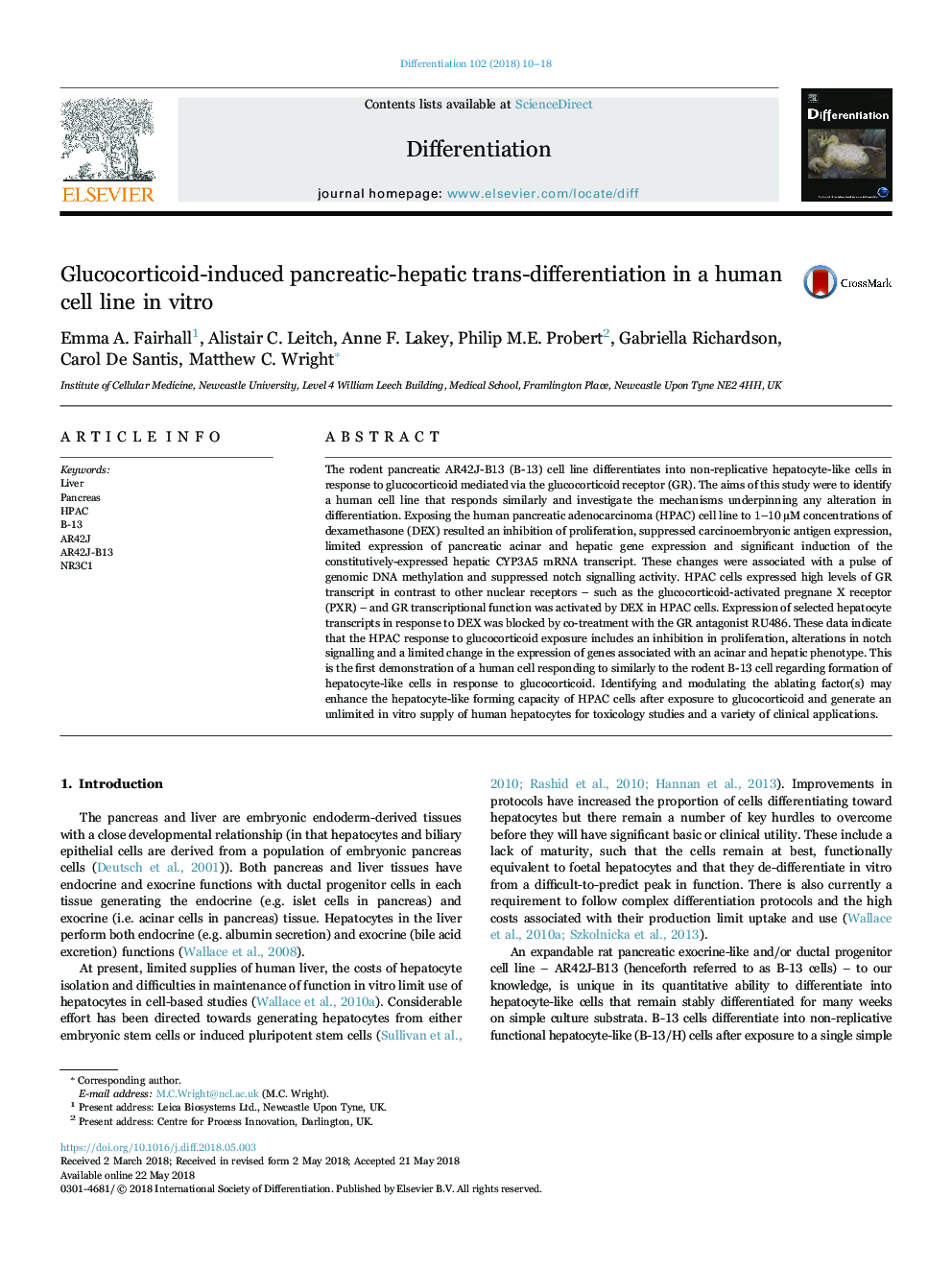| کد مقاله | کد نشریه | سال انتشار | مقاله انگلیسی | نسخه تمام متن |
|---|---|---|---|---|
| 8436172 | 1546777 | 2018 | 9 صفحه PDF | دانلود رایگان |
عنوان انگلیسی مقاله ISI
Glucocorticoid-induced pancreatic-hepatic trans-differentiation in a human cell line in vitro
ترجمه فارسی عنوان
ترانسفیبریسیون پانکراس-کبدی ناشی از گلوکوکورتیکوئیدی در یک سلول انسانی درون سلولی
دانلود مقاله + سفارش ترجمه
دانلود مقاله ISI انگلیسی
رایگان برای ایرانیان
کلمات کلیدی
موضوعات مرتبط
علوم زیستی و بیوفناوری
بیوشیمی، ژنتیک و زیست شناسی مولکولی
تحقیقات سرطان
چکیده انگلیسی
The rodent pancreatic AR42J-B13 (B-13) cell line differentiates into non-replicative hepatocyte-like cells in response to glucocorticoid mediated via the glucocorticoid receptor (GR). The aims of this study were to identify a human cell line that responds similarly and investigate the mechanisms underpinning any alteration in differentiation. Exposing the human pancreatic adenocarcinoma (HPAC) cell line to 1-10â¯ÂµM concentrations of dexamethasone (DEX) resulted an inhibition of proliferation, suppressed carcinoembryonic antigen expression, limited expression of pancreatic acinar and hepatic gene expression and significant induction of the constitutively-expressed hepatic CYP3A5 mRNA transcript. These changes were associated with a pulse of genomic DNA methylation and suppressed notch signalling activity. HPAC cells expressed high levels of GR transcript in contrast to other nuclear receptors - such as the glucocorticoid-activated pregnane X receptor (PXR) - and GR transcriptional function was activated by DEX in HPAC cells. Expression of selected hepatocyte transcripts in response to DEX was blocked by co-treatment with the GR antagonist RU486. These data indicate that the HPAC response to glucocorticoid exposure includes an inhibition in proliferation, alterations in notch signalling and a limited change in the expression of genes associated with an acinar and hepatic phenotype. This is the first demonstration of a human cell responding to similarly to the rodent B-13 cell regarding formation of hepatocyte-like cells in response to glucocorticoid. Identifying and modulating the ablating factor(s) may enhance the hepatocyte-like forming capacity of HPAC cells after exposure to glucocorticoid and generate an unlimited in vitro supply of human hepatocytes for toxicology studies and a variety of clinical applications.
ناشر
Database: Elsevier - ScienceDirect (ساینس دایرکت)
Journal: Differentiation - Volume 102, JulyâAugust 2018, Pages 10-18
Journal: Differentiation - Volume 102, JulyâAugust 2018, Pages 10-18
نویسندگان
Emma A. Fairhall, Alistair C. Leitch, Anne F. Lakey, Philip M.E. Probert, Gabriella Richardson, Carol De Santis, Matthew C. Wright,
